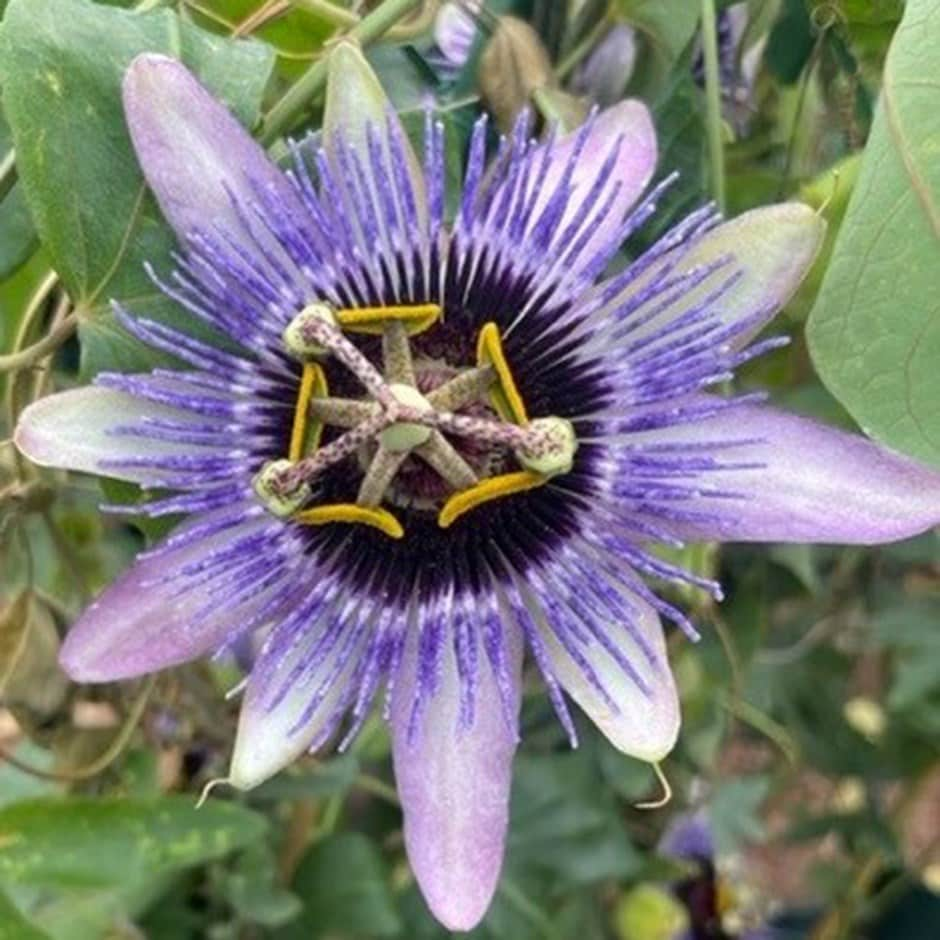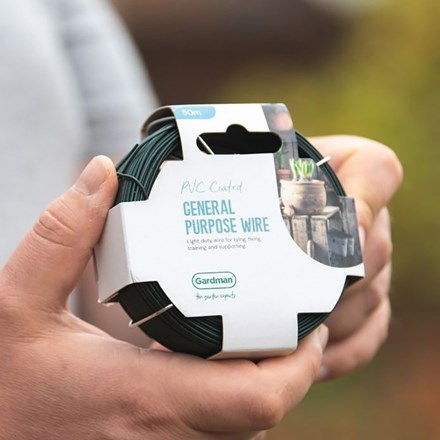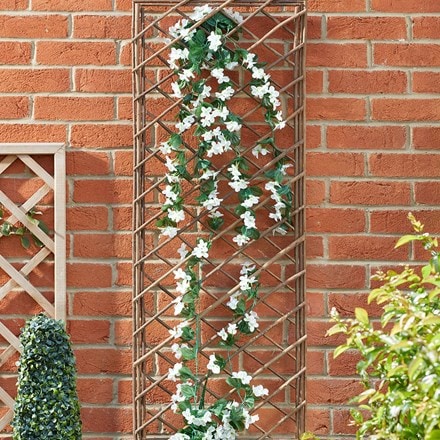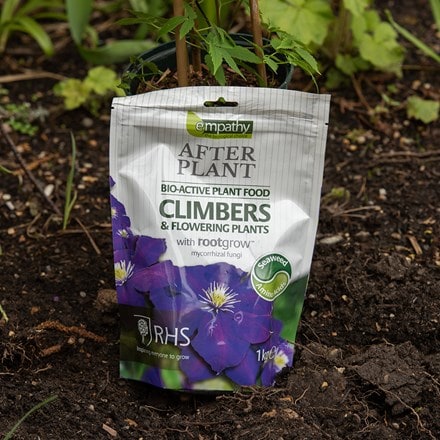Passiflora 'Damsel's Delight'
passion flower
- 3 litre pot | 60cm cane
- £26.39 £32.99
- available to order from autumn
Delivery options
- Standard £5.99
- Position: full sun or partial shade
- Soil: moderately fertile, moist, well-drained soil
- Rate of growth: fast
- Flowering period: July to September
- Hardiness: frost hardy (may need winter protection)
Passiflora 'Damsel's Delight' brings a taste of the tropics with its cascades of intricate blooms and vines of abundant lobed foliage. This vigorous semi-evergreen climber twines skyward on tendrils, reaching up to 12m if given adequate support. Its large, lush leaves unfurl in rich emerald hues - a striking complement to the exotic blossoms appearing midsummer. Cup shaped flowers 10 cm (4in) wide open to reveal deep purple petals that cradle contrasting white and pale pink filaments with anthers saturated in inky hues.
To avoid dry conditions, and to ensure good soil contact around the rootball, we advise planting climbers at least 30cm (12in), and preferably 45-60cm (18-24in) away from the base of a wall or fence. An even larger distance should be maintained when planting climbers beside an existing tree or shrub.
Passionflowers thrive in moist, well-drained soil enriched with plenty of well-rotted manure or garden compost before planting. Choose a sunny, sheltered spot protected from cold winds or pot up in a greenhouse or conservatory for earlier growth and better fruit ripening.
Provide sturdy support, such as trellis or horizontal wires, for the twining stems to climb. Water freely during the growing season and reduce slightly in winter. For container growing, use large pots to account for rapid root growth, and ensure plants are moved to a frost-free location in winter.
Feed regularly throughout the growing season and mulch in autumn with well-rotted manure or compost. In late autumn, cut back the top growth to around 10cm (4in) and apply light winter protection, such as a thick mulch around the base (avoiding the main stem) and wrapping the plant with a double layer of horticultural fleece if heavy frost is forecast.
Passionflowers may die back in winter but will re-emerge in late spring in milder regions of the UK. Prune in spring to remove dead or overcrowded stems, and once established, trim flowered shoots after blooming to encourage strong growth.
Passionflowers thrive in moist, well-drained soil enriched with plenty of well-rotted manure or garden compost before planting. Choose a sunny, sheltered spot protected from cold winds or pot up in a greenhouse or conservatory for earlier growth and better fruit ripening.
Provide sturdy support, such as trellis or horizontal wires, for the twining stems to climb. Water freely during the growing season and reduce slightly in winter. For container growing, use large pots to account for rapid root growth, and ensure plants are moved to a frost-free location in winter.
Feed regularly throughout the growing season and mulch in autumn with well-rotted manure or compost. In late autumn, cut back the top growth to around 10cm (4in) and apply light winter protection, such as a thick mulch around the base (avoiding the main stem) and wrapping the plant with a double layer of horticultural fleece if heavy frost is forecast.
Passionflowers may die back in winter but will re-emerge in late spring in milder regions of the UK. Prune in spring to remove dead or overcrowded stems, and once established, trim flowered shoots after blooming to encourage strong growth.
- Humans/Pets: Fruit are ornamental - not to be eaten
Goes well with
Empathy RHS after plant climbers & flowering plant food with rootgrow
1kg
£7.99
In stock (shipped within 2-3 working days)



